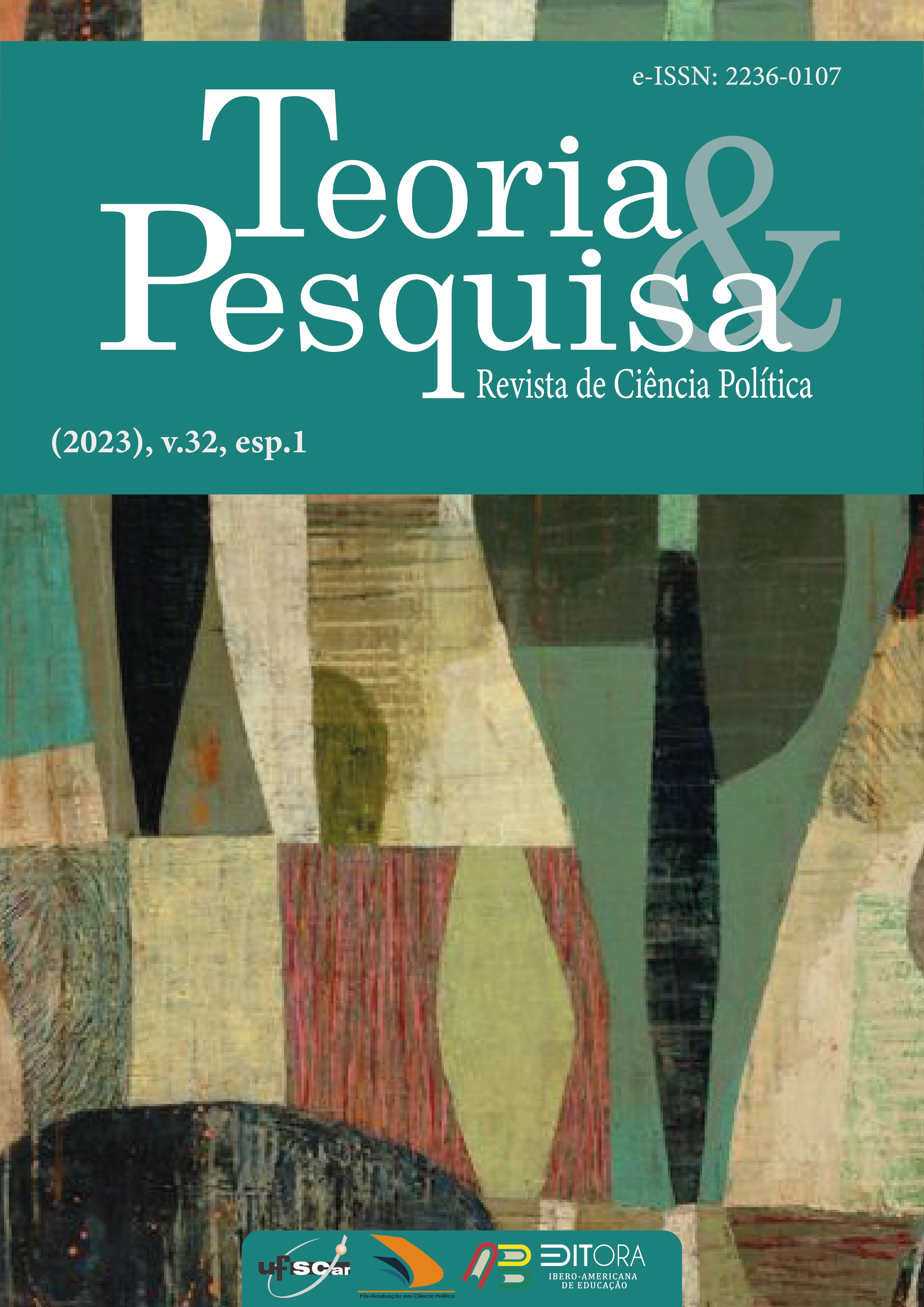Female substantial representation in the brazilian legislative chamber, from 2003 to 2015
DOI:
https://doi.org/10.31068/tp.v32iesp.1.1051Keywords:
Brazilian federal deputies, Substantive representation, Female parliamentary behaviorAbstract
This article aims to present a mapping of the parliamentary profile of female deputies who assumed mandates in the legislatures of 2003-2007, 2007-2011, and 2011-2015, through the analysis of their legislative production, emphasizing the proposition of bills related to women's issues. The objective is to verify to what extent female parliamentary activity results in substantive representation in the Brazilian Federal Legislative Chamber. This research is based on a theoretical debate about the main conceptions of political representation, especially substantive representation, and its ramifications in the political space. Therefore, substantive representation is considered based on the representative's activity, that is, the content of their political actions and their correspondence with the interests of the electorate. The data for this study were collected from the Chamber of Deputies' website, identifying the place of birth and party affiliation of the female deputies, the number of bills proposed by each parliamentarian, the type of authorship of the proposition, and the status of the matter in the legislative process. In the case of archived propositions, information about the reasons for archiving was also collected. The content of each proposed bill was analyzed, and based on the committees that discussed the matter, a classification of 27 topics addressed by the female deputies in their bills was established. This article highlights that female parliamentarians propose several bills proportional to their male colleagues. Over 50% of the propositions are authored solely by the female deputies, and in terms of the topics addressed, they are related to both "care" areas and areas considered "masculine," such as labor, economy, finance and taxation, administration, and public service. Regarding feminist and women-related topics, these proposals represent only 12% of the total, addressing issues such as work, women's health, and violence against women. In summary, female underrepresentation in politics is a barrier to be overcome, but there have been significant advances in the parliamentary activity of elected women. They are debating topics considered masculine and acting autonomously in Parliament. Thus, this research highlights the importance of minority groups in elected positions. In the case of female deputies, the increase in their political representation strengthens substantive female representation and can contribute to gender issues becoming more visible on the agendas of parliamentarians of both sexes.
Downloads
References
ALMEIDA, Carla; LÜCHMANN, Lígia; RIBEIRO, Edinaldo. Associativismo e Representação Política no Brasil. Revista Brasileira de Ciência Política, v. 8, p. 237-263, 2012.
CASTRO, Silvana. Participação Feminina na Câmara dos Deputados: Um retrato da 50 Legislatura (1995-1999). 2007. 53 f. Monografia (Especialização em Processo Legislativo) – Centro de Formação da Câmara dos Deputados, Brasília, 2007.
CAUL, Kittilson. Women’s representation in Parliament: the role of political parties. Party Politics, v. 5, n 1, p. 79.98, 1999.
CELIS, Karen et al. Rethinking women's substantive representation. Representation, v. 99, n 110, p. 2-44, 2008.
DINIZ, Simone. Processo legislativo e sistema de comissões. Revista do Legislativo, n. 26, p. 60-78, 1999.
FIGUEIREDO, Argelina; LIMONGI, Fernando. Executivo e Legislativo na Nova Ordem Constitucional. Rio de Janeiro: Fundação Getúlio Vargas, 1999.
FRANCESCHET, Susan. Promueven las cuotas de Género los intereses de las mujeres? El impacto de las cuotasen la representación sustantiva de las mujeres. In: TOBAR, M. R. (ed.). Mujer Y Política: el impacto de las cuotas de gênero en América Latina. 1. ed. Santiago, Chile: Catalonia, 2008.
KARLINSKI, Elisangela. Gênero na Câmara Legislativa do Distrito Federal: Um olhar sobre a ação parlamentar feminina. 2012. 151 f. Monografia (Especialização em Processo Legislativo) – Centro de Formação da Câmara dos Deputados, Brasília, 2012.
MANSBRIDGE, Jane. Rethinking Representation. American Political Science Review, v. 97, n. 4, 2003.
MOTTA, Bruna Karoauk. Participação Política das Mulheres na Câmara Federal Brasileira nas 52ª, 53ª e 54ª Legislaturas. 2016. 123 f. Monografia (Especialização em Processo Legislativo) – Centro de Formação da Câmara dos Deputados, Brasília, 2016.
PAIVA, Denise; HENRIQUE, Ana Lúcia; SILVA, Gabriela Peixoto. Atuação das mulheres no Poder Legislativo Federal e Estadual e no Brasil: ainda muito distante da paridade de gênero. Cadernos Adenauer, São Paulo, v. 3, p. 167-182, 2013.
PHILLIPS, Anne. De uma política de ideias a uma política de presença? Revista Estudos Feministas, v. 9, n. 1, p. 268-290, 2001.
PINHEIRO, Luana. Vozes femininas na política: uma análise sobre mulheres parlamentares no pós-Constituinte. 2006. 248 f. Dissertação (Mestrado) – Departamento de Sociologia, Universidade de Brasília, Brasília, 2006.
PITKIN, Hanna. The concept of representation. University of California Press, London, Englad,1972.
POST, Tayla Fernanda. Representação substantiva de mulheres na Câmara dos Deputados. 2015. Monografia (Especialização em Processo Legislativo) – Centro de Formação da Câmara dos Deputados, Brasília, 2015.
UNITED NATIONS DEVELOPMENT PROGRAMME. Human Development Indices and Indicators 2018. Communications Development Incorporated, Washington DC, USA 1 UN Plaza, New York, 2018.
PRINCE, Evangelina García. Sentido y contenidos de la construcción de una agenda legislativa para el desarrollo de los derechos de las mujeres. Contenido, 2007.
SILVA, Ana Paula. Os efeitos do associativismo no desempenho parlamentar feminino. 2015. Dissertação (Mestrado) – Departamento de Ciências Sociais, Universidade Estadual de Maringá, Maringá, Paraná, 2015.
URBINATI, Nadia. O que torna a representação democrática. Lua Nova, v. 67, p. 191-228, 2006a.
URBINATI, Nadia. Representative Democracy: Principles & Genealogia. Chigaco Press, 2006b.
WARREN, Mark. Rethinking Democratic Representation: Eight Theoretical Issues. Centre for the Study of Democratic Institutions University of British Columbia, 2006.
YOUNG, Iris Marion. Representação política, identidade e minorias. Lua Nova, v. 67, p. 139-190, 2006.












